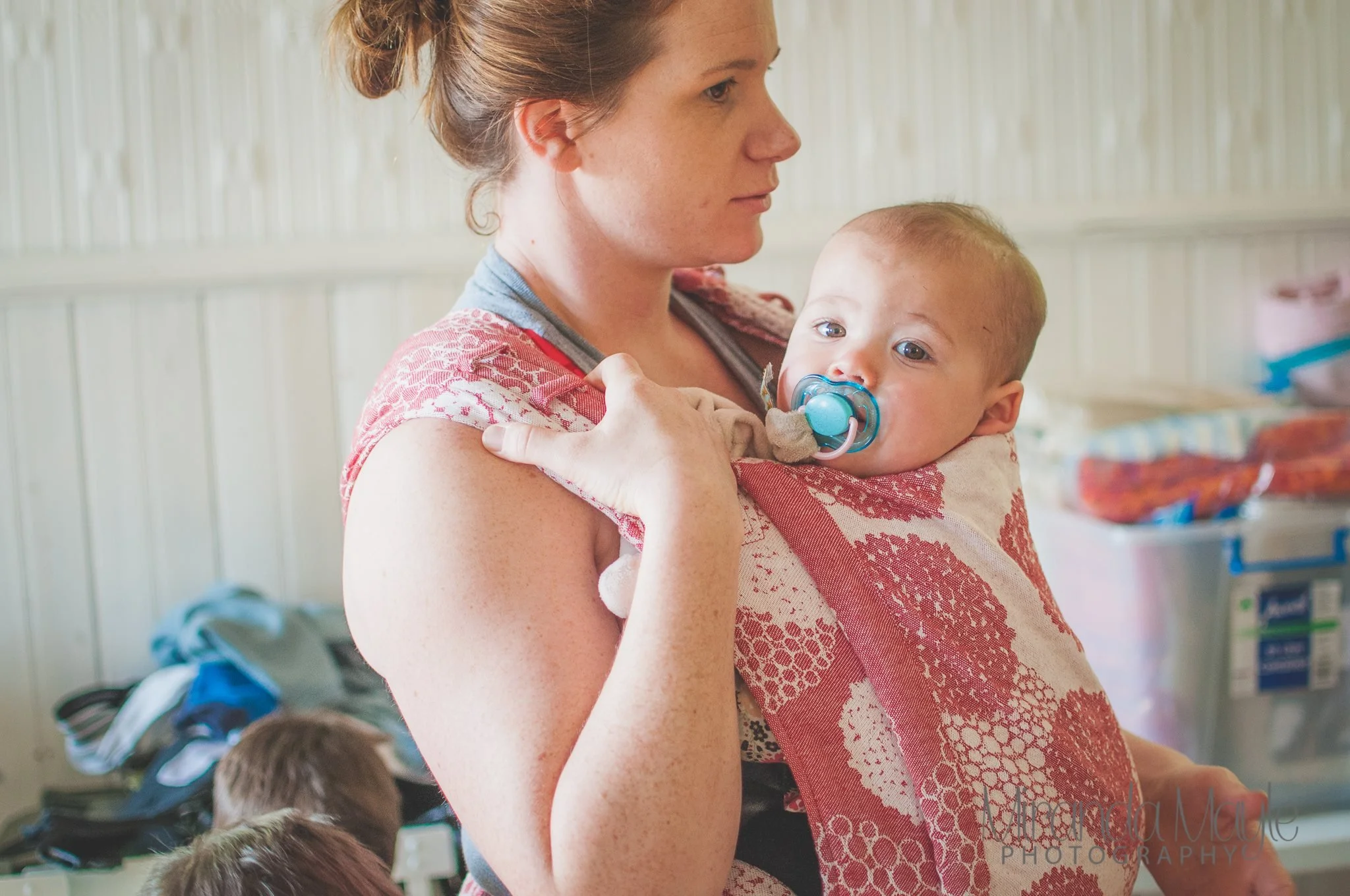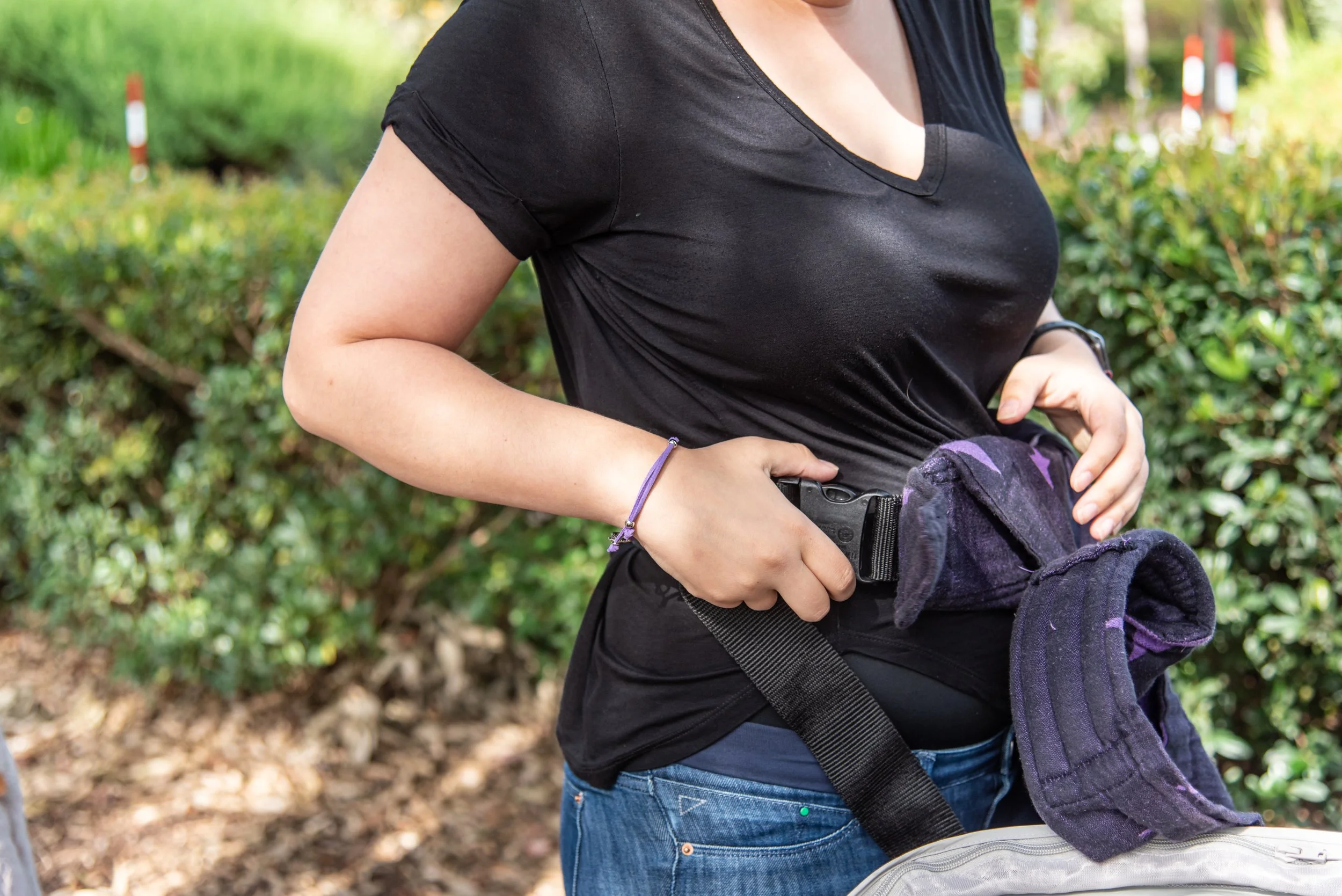The Anatomy of a Meh Dai
If a woven wrap and a soft structured carrier had a baby, it would be a meh dai (also known as mei tai). Simple, supportive, and beautifully adaptable, the meh dai is a wonderful option for caregivers who want the comfort of wrapping with a little less fuss.
To help you get started, let’s walk through the different parts of a meh dai — the language we’ll use when teaching how to tie and adjust it, and the key features to know as you learn.
The Body Panel
This is the central part of the carrier — the soft, rectangular panel that supports your baby. It goes from behind their knees to the back of their neck (or shoulders for older babies), cradling their body in a seated position.
Some meh dais have padded sides, adjustable width or height, or a slightly contoured shape — but at its heart, this is the part that “hugs” your baby.
Waist Straps
Attached to the bottom of the body panel, the waist straps are tied around your body first — usually with a secure double knot at your back or front, depending on your preference and carry style.
They provide the anchor point for the rest of the carrier, helping to create a little seat for your baby to sit in. You’ll want the waist snug and even before baby goes in.
👉 Some meh dais (like the half-buckle style) have a buckle at the waist instead of long ties — but the concept is the same.
Shoulder Straps
The long shoulder straps are where the meh dai really shines. Once baby is seated in the panel, you bring the shoulder straps over your shoulders, cross them behind your back (or bring them under your arms, depending on the carry), and then tie them securely under baby’s bum or behind your back.
The straps can be padded or unpadded, straight or slightly flared, and even wrap-style (extra wide for spreading across your back or baby’s bum). Each variation offers different comfort and support options.
Passes and Tie-Offs
Just like in woven wrap carries, each strap is creating a pass over or under your body and baby’s. Some carries are tied under bum (TUB), others are tied at back, or involve reinforced passes for extra support.
It’s helpful to name each step as you go: "cross the straps behind me," "bring them under baby's knees," "tie under their bottom." Using the same language each time builds muscle memory — for you and your support people.
Optional Features
Many modern meh dais come with a few extras:
Hood or headrest – Can be used for extra neck support or sun protection
Adjustable panels – To grow with your baby
Dual adjustments – Like buckles or cinch straps to help customise the fit
But the beauty of the meh dai is that even the simplest version does the job beautifully.
Why Learn the Anatomy?
Knowing the parts of your meh dai helps you understand how and why it works — and makes it easier to troubleshoot fit and comfort.
Once you're familiar with these terms, you’ll find it easier to follow tutorials and get support in babywearing groups. We’ll refer to each part by name when teaching you how to tie on your carrier and adjust it for a snug, safe fit.
You're doing something amazing. And we’re here to walk alongside you — from your first knot to those sleepy snuggles.





